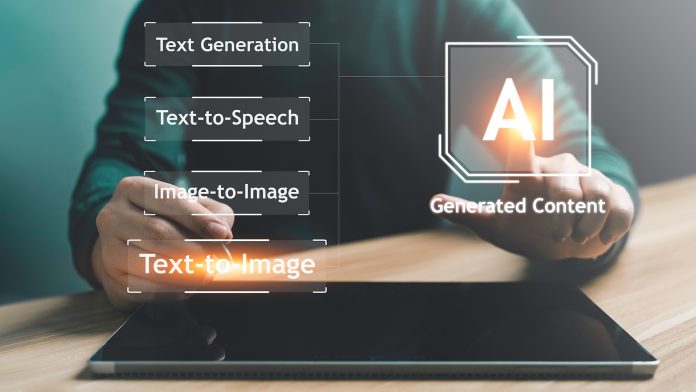We’ve all heard about growing interest in generative AI, especially following the release of ChatGPT.
Generative AI, the Artificial Intelligence (AI) large language model, has the potential to revolutionise business operations and accelerate digital transformation journeys.
Those that get ahead of this trend are set to gain a significant competitive advantage, with this model showing no signs of disappearing anytime soon.
While historically, AI projects have been long, expensive, and complex, generative AI has the potential to reduce time to value for digital transformation initiatives and make advanced technologies more accessible to a greater cross section of people thanks to its ease of use and learning capabilities.
How generative AI supports the digital transformation
Digital transformation initiatives went into hyperdrive following the pandemic, but most organisations have yet to maximise business outcomes with their current automation plans.
Intelligent automation combines technologies, like generative AI, robotic process automation (RPA), business process management, etc., to reengineer processes and drive business outcomes.
So, what’s the value of this technology? Its range of capabilities and accessibility is unprecedented, marking an exciting time for the automation space and any sector standing to benefit from advancements in natural language processing, including healthcare, finance, and customer service.
However, generative AI is still limited, in a sense, to its own domain knowledge.
When you combine its unique capabilities with the power of intelligent automation, the impacts for digitalisation are extraordinary.
Generative AI can be used to automate tasks that were previously only possible for humans to perform, such as generating new marketing copy, designing new product prototypes, or creating personalised content for each customer.
It can suggest automations and enable a greater cross section of workers to initiate the development of automations thanks to its ease of use. Automations can then be designed within designated governance parameters and best practices.
By automating these tasks, employees can reduce their workload, supporting work-life balance, while also increasing their efficiency, reducing company-wide costs, and improving the accuracy and quality of their output. Employees work with it to deliver superior results.
When it comes to creative work, humans add color and empathy, which technology can only try to mimic. Generative AI gives them a starting point, helps with idea generation, etc. Human workers provide their uniquely human abilities to read between the lines and their emotional empathy for which AI is not substitute.
For many people, when they think ‘generative AI,’ they think about written content or even AI art, but the use cases for it relate to the day-to-day operations of most office workers.
For example, automated emails can exhibit a greater degree of personalisation and improve resolution times. For more complex or high-level emails, this type of AI can be used to draft an adequate, personalised email, with all needed information, and a human can then review and tweak if needed.
A similar process can unfold with contact centre processes, AI bots can progress customer communications significantly before needing to loop in a human employee – if they need to be looped in at all for simple enquiries.
This ensures human employees’ time is used effectively and as many customers as possible are being serviced, especially with bots being able to work around the clock. Error handling is improved with error messages providing context that enables immediate resolution.
Intelligent document processing (IDP) solutions, which use a combination of optical character recognition and AI to extract information that is locked away in documents, are enhanced by generative AI capabilities. This is especially important for financial and healthcare services. Generative AI’s understanding and learning features better equip it to contend with unstructured data, an area that has been a weak point for IDP solutions, which have been confined to structured and semi-structured documents at best.
It can also help improve the overall performance of intelligent automation systems by allowing them to adapt and learn over time by analysing the results of previous tasks and using that data to generate new content or output.
The need for governance and risk management to unlock the potential of AI
However, businesses need to make certain considerations before they explore adding generative AI to their toolkit to accelerate digital transformation, since its outputs can have a significant impact on a company’s reputation, revenue, and legal liabilities.

A clearly defined corporate governance risk management strategy and set of operating principles around this need to be developed. Done right, AI can support an automation strategy that is even more innovative, cost-effective, and productive than anything we have seen before.
Reasons why governance and risk management considerations are important when using generative AI:
- Help ensure AI-generated content does not violate intellectual property, privacy, or other laws;
- Make sure use aligns with your organisation’s ethical principles;
- Maintain your organisation’s quality standards and confirm outputs are consistent with expectations; and
- Ensure the right information is used for the right purposes to protect sensitive information and privacy.
How to develop a governance and risk management strategy
A clearly defined strategy and concomitant operating principles maximise the benefits of generative AI while mitigating any outfall. Developing a strategy involves several key steps:
- Define the scope: This includes the types of content you will be generating, the data you will be using, and the intended use cases for the content. This helps with identifying the specific risks and governance requirements that apply to your initiatives;
- Identify risks: These may include legal risks such as infringing on intellectual property, ethical risks such as bias in generated content, and security risks such as the potential for data breaches. You may need to engage with legal and compliance experts to identify all potential risks;
- Establish governance requirements: Based on the risks you’ve identified, establish governance requirements that will mitigate those risks. These may include policies and procedures for data handling, content review, and compliance with regulations;
- Develop a risk management plan: Outline how your organisation will mitigate and manage risks. This may include risk assessments, monitoring, and regular reviews of governance practices, as well as processes for identifying and addressing any issues that arise;
- Train employees: It’s important to train employees on governance and risk management practices. This may include training on data handling, content review, and compliance with regulations. Make sure all employees who will be working with generative AI understand the risks and their responsibilities for mitigating those risks; and
- Monitor and review: Monitor and review your governance and risk management practices on an ongoing basis. This will help you identify any gaps or issues that need to be addressed and ensure that your practices remain effective over time.
Like all advanced technologies, generative AI’s impact is positive – so long as you take the steps necessary to ensure you’re using it the right way. There’s no turning back the train, it is here to stay – full steam ahead.
The best approach is going to be to embrace it with care and work with providers when it comes to decision making around implementation. The possibilities behind generative AI are exciting – so let’s work to get it right and make it a force for good.









